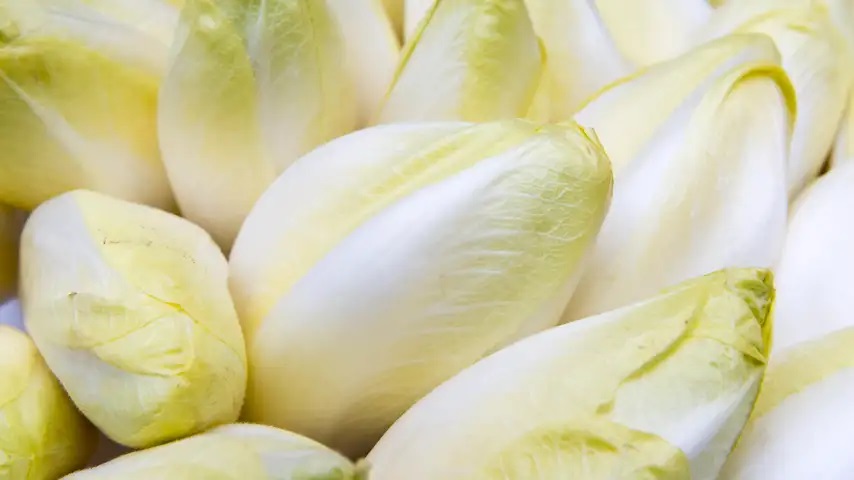Belgian endive

Belgian endive is specifically grown through a process called “forcing.” The cultivation of this vegetable begins by growing chicory roots in the field. After the roots have developed, they are harvested and brought indoors to complete the forcing process. During this stage, the roots are kept in darkness and exposed to controlled conditions, encouraging the growth of the characteristic tightly packed, pale leaves. This forced growth gives Belgian endive its distinct appearance and mild flavor compared to wild chicory or common chicory.
The vegetable has a slightly bitter taste and a crisp texture, making it popular in various culinary applications. It can be used raw in salads to add a pleasant crunch and subtle bitterness or cooked in various dishes like soups, stews, and stir-fries. Belgian endive is also often used as a garnish or served as a side dish.
Belgian endive is widely enjoyed in European cuisines, particularly in Belgium and France, where it is a common ingredient in many traditional dishes. It is also gaining popularity in other parts of the world due to its unique flavor and versatility in cooking.



Leave a Reply